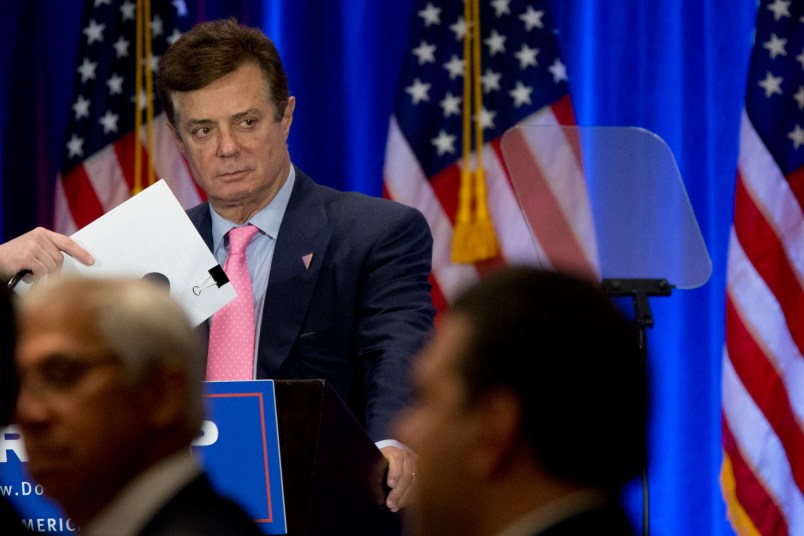I’ve long been intrigued by just how Paul Manafort managed to get involved in Donald Trump’s campaign. I’ve written about this before. One of the key facts of the relationship is that Manafort agreed to work for free – something that always struck me as quite out of character. The key public information comes from an April New York Times article by Glenn Thrush, which I’d like to return to now.
Thrush got access to a package of emails and documents that detailed how Manafort came into the Trump orbit through one of Trump’s most trusted outside advisors, Thomas Barrack, a real estate and private equity investor.
Much of Thrush’s article details Manafort’s pitch to Trump – how he was an outsider, how he’d work for free, basically how he’d be awesome. Manafort also owned an apartment in Trump Tower and Trump thought he was good looking and presented well. But it’s the part about Barrack’s role that has always interested me. Here’s the relevant passage from the article …
But it was Mr. Manafort who initiated the process for getting a job on the campaign, the documents show. It began when he sent two succinct memos to Mr. Trump through Thomas J. Barrack Jr., a mutual friend.
A couple of weeks earlier, Mr. Barrack met with Mr. Manafort for “coffee and snacks” at the Montage hotel in Beverly Hills, according to Jason Maloni, Mr. Manafort’s spokesman. He added that Mr. Barrack wanted his old friend to help the struggling campaign deal with potential challenges at the convention.
Mr. Maloni said that the memos were intended only to be talking points for Mr. Barrack’s pitch to the Trump family, but that after reading the packet, the candidate requested a one-on-one meeting with Mr. Manafort.
Mr. Manafort, for his part, was eager to join up: At the time, he had told another friend, who was also close to the campaign, that he was eager to get back into the game of presidential politics.
Mr. Barrack, in turn, appended an effusive cover letter to the memos that described Mr. Manafort in terms that Mr. Trump would like, calling him “the most experienced and lethal of managers” and “a killer.”
My question is: who pitched who here? To my read it’s ambiguous. But it sounds like Barrack at first sought out Manafort, that he wanted to help Trump’s campaign and Manafort seemed like someone who could help? Then Manafort prepared memos that were supposed to serve as talking points for Barrack to make his pitch to Trump? But then Trump read the memos themselves and decides he wanted to talk to Manafort directly?
Reading this it’s hard for me to believe we’re getting the full or the real picture of what happened here. There was apparently a lot of gravity pulling Trump and Manafort together. Or rather, there was some strong force getting Manafort into Trump’s orbit, even though Manafort was maybe the 900th person on the list probably anyone would have thought of for Trump to hire. Did Barrack seek out Manafort or vice versa? Was the idea always that Manafort should go to work for Trump or that he was just providing some advice and guidance that Barrack could convey?
What seems clear is that Manafort really wanted to work for Trump – badly wanted to work for him. Just why he wanted is another issue. My question is, what was Barrack’s real role here? Assuming Manafort wanted to connect with Trump, did Manafort just very effectively use Barrack to make contact? I don’t think – or have no reason to think – that Barrack himself had some nefarious motive for bringing Manafort to Trump. But given the fact that Manafort’s motives for wanting to work for Trump are very much in question, I think we need to know a lot more than this terse explanation about what role he played and just what happened.






